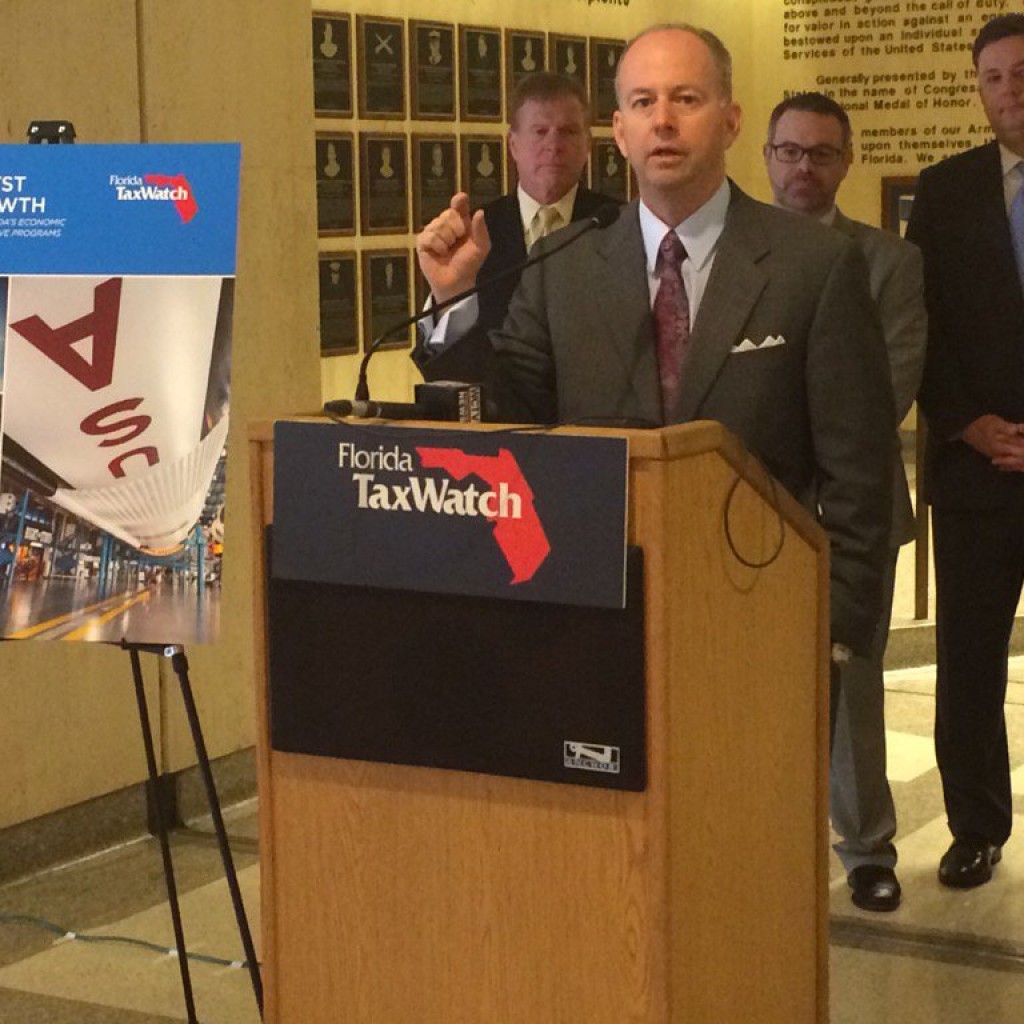
Florida TaxWatch trumpeted the release of a new report Thursday morning, in which the conservative watchdog group endorsed plans to keep tax dollars flowing to economic incentives along the lines of those favored by Gov. Rick Scott, including $250 million Scott has requested for a dedicated fund for Enterprise Florida business recruitment efforts.
The report titled “A Catalyst for Growth: An Analysis of Florida’s Economic Development Incentive Programs” contends incentives are bringing results in the form of job growth and better economic indicators.
The report praises programs enacted by the GOP-led Legislature as part of the state’s economic development “toolkit,” including the Quick Action Closing Fund, Qualified Targeted Industry Business Tax Refund, Brownfield Redevelopment Tax Refund, and High-Impact Business Performance Grant, all passed as part of the 2015 state budget.
The report says the programs are viable and as important as ever for keeping Florida competitive, though “support amongst policymakers may be waning.”
A clutch of TaxWatch supporters and stakeholders presented the report to reporters in the Capitol, including TaxWatch President and CEO Dominic Calabro, former U.S. Sen. George LeMieux, Department of Economic Opportunity Executive Director Cissy Proctor, and former U.S. Rep. and House Speaker Tom Feeney. In a word, they said Scott-style incentives are working.
“It is critically important that Florida invests in the future and promotes our state as the best state to build and grow a business,” said Proctor, who took over the top job at DEO from Jesse Pannuccio last month. “Supporting our economic development incentive toolkit will provide Floridians with more high-wage job opportunities.”
Other conservative groups such as Americans for Prosperity-Florida have denounced many incentives – for the entertainment industry and sports stadiums, for instance – as taxpayer-funded “corporate welfare.”
The new TaxWatch report says the most recent entertainment industry incentives brought a return on investment ranging from 0.25 to 0.43, “showing that the program did not result in state revenue above the incentives provided.”


